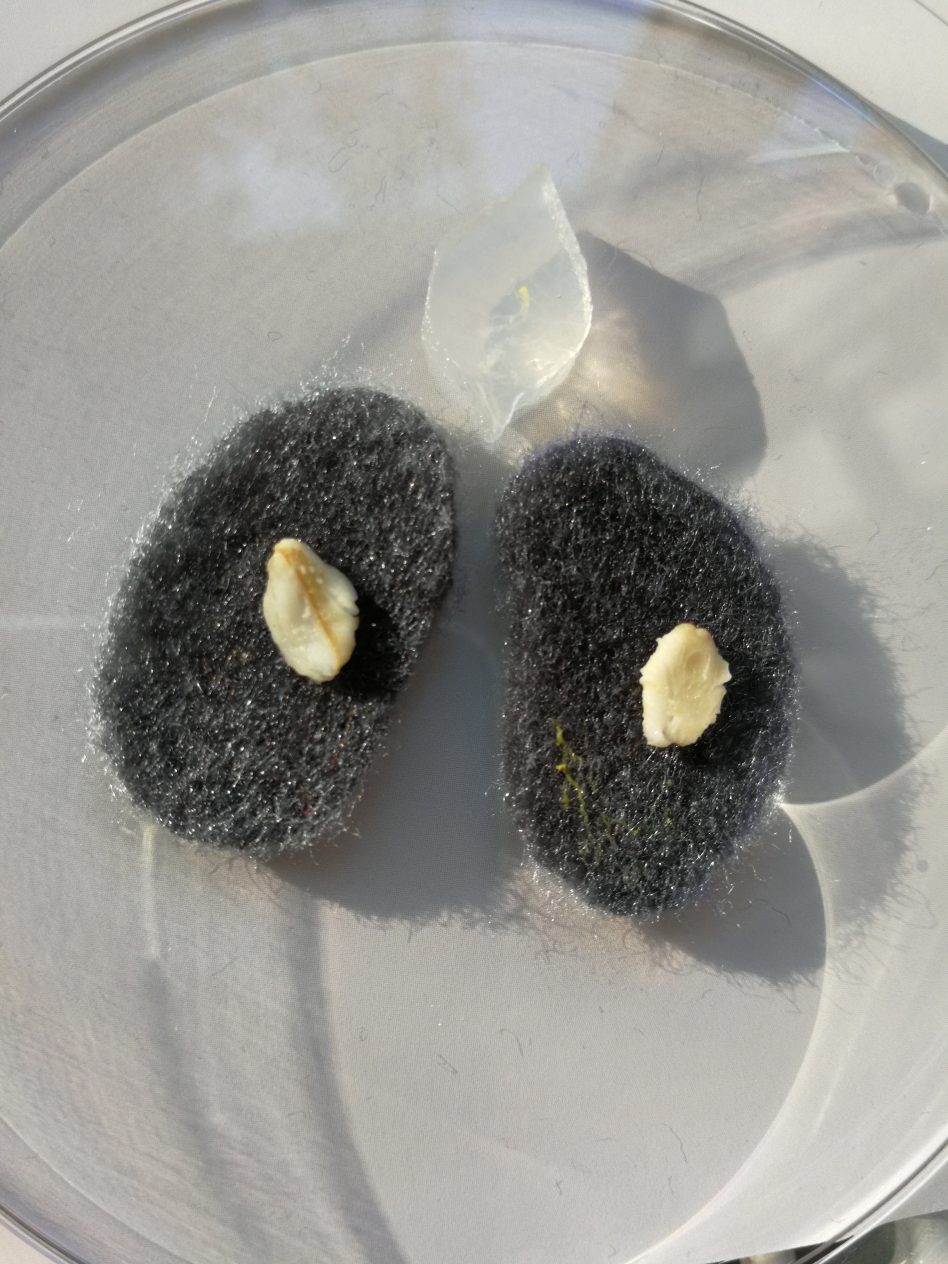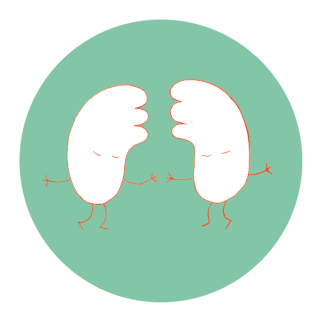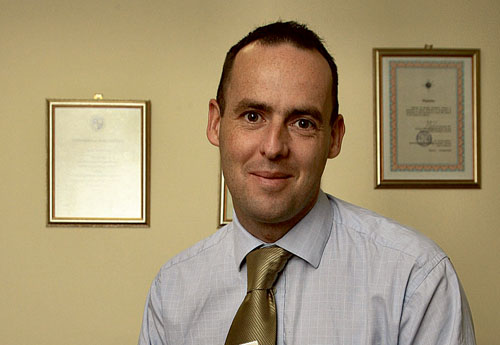Last weekend I went to the workshop SWARM | CELL | CITY by Heather Barnett at Art Laboratory as part of their exhibition “Nonhuman Networks”. Heather is an artist who works with slime mould. As an introduction she gave a presentation about slime mould: how it behaves, how it moves, how it communicates, in what conditions it thrives or withers, and what it likes or dislikes. We learnt, for example, that slime mould likes to eat oats and doesn’t like salt. Even though slime mould, as an amoeba, has no central nervous system or organs, it displays the same intelligent behavior as other living beings. Read More
Ghost
In this image of a wolf howling, one can see the visible shape of the warm air coming from inside the wolf‘s body meeting with the cold atmospheric air.
The reason we can see the air, is because the moisture contained in the air, from the moist environment of the airways, takes longer to evaporate in cold air than in warm air. In the window of time it takes for the moisture to evaporate, we can see the breath. But it seems to be more than moisture and an amalgamation of trace gases emanating from the wolf‘s throat. The fleeting but distinct shape hovering above its raised muzzle conjures up a ghost-like presence. The word „breath“ is indeed related to the word „ghost“; etymologically „ghost“ is rooted in the Old English gast, „breath, good or bad spirit… and the Old German Geist, „spirit, ghost“. Interstingly, they are presumed to stem from the PIE root gheis-, used in forming words involving the notions of excitement, amazement, or fear, emotions and states that are palpably connected with breathing.
Source: http://www.etymonline.com
Breath Token September 2017
A breath token is a breathing exploration that I develop for friends & clients and send out as a gift.
This is an excercise from Professor Middendorf‘s book „The perceptible breath, A breathing science“. We let the right hand rest on the upper thigh, palm facing upwards. and take the middle three fingers of the left hand and gently press the tips into the center of the palm of the right hand. Then we release. Press and release. Generally the inhale comes on pressing and the exhale comes with the release. We sense how it is with us, how the breath corresponds with the movement. As always we find the right intensity and rhythm for us and do the exploration for as long as it feels agreeable.
Then we change sides.
This exploration is for opening up the middle space of the torso for the breath movement to flow through.
The benefits I experienced were:
a „healing touch“experience through the different gestures of each hand
easy breathing
deepening of the breath
slowing down of the breath
extension of the breath pause
getting in touch with myself
agreeable to do whilst on the road or in company
There are surely other benefits for you to discover. If you have any questions or feedback please contact me.
Source: Ilse Middendorf: The perceptible breath, A breathing science, Junfermann Verlag, 2007
“…the air between us”
In a letter to Merce Cunningham, John Cage writes:
“i would like to measure my breath in relation to the air between us.”
Source: The Selected Letters of John Cage, Wesleyan 2016
Anxiety free
In this interview with „personal philosopher“ Brian Johnson, Buteyko breath teacher Patrick McKeown talks about breathing in relation to thinking: „by focussing on the breath, we take control back over our minds“. He maps out how „there are two types of thoughts, „productive thoughts and repetitive thoughts“. The productive thoughts are neccessary for planning activities, the repetitive thoughts are unnecessary and keep going round and round in a loop, not leading to an activity. As opposed to other animals, because of our thinking „we tend to focus on what‘s not going on around us“. Read More
Breath Token August 2017
A breath token is a breathing exploration that I develop for friends & clients and send out as a gift.
Let’s take the idea of stretching and redefine it as a „leaning into a space“. We can lean from anywhere inside the torso towards the inner walls of the torso. This could be to the side, upwards or downwards, forwards or backwards, or diagonally. Where I meet with a resistance I explore it rather than go up against it. Leaning into the resistance, gently as into a sofa cushion or more directly as against a wall, waiting for the space to expand, to open so that the breath can flow in.
The benefits I experienced were:
A strong sense of the breath movement
Mobility in the chest
Deep, gentle and regular breathing
A sense of space in the entire torso
Becoming aware of tension and pain patterns in the torso
There are surely other benefits for you to discover. If you have any questions or feedback please contact me.
„While we breathe, we open time like a path in the grass.“
In Annie Dillard‘s non-ficition „For the Time Being“, she writes these poetic lines about living being in time and space; the time it takes to be in space and the space it takes to be in time, modulated by our breath.
„Ours is a planet sown in beings. Our generations overlap like shingles. We don’t fall in rows like hay, but we fall. Once we get here, we spend forever on the globe, most of it tucked under. While we breathe, we open time like a path in the grass. We open time as a boat’s stem slits the crest of the present.”
Source: Annie Dillard, For the Time Being, Vintage, 2010
„Why didn‘t anyone tell me I‘m alive“
https://www.youtube.com/watch?v=sLuDOEuwwso
In one of the most inspiring videos about the writing life I‘ve ever seen, Ray Bradbury speaks about the moment he discovered sensing himself, and the impact of conscious sensation on creativity.
Source: https://www.youtube.com/watch?v=sLuDOEuwwso Ray Bradbury
Coherence BreatheHeart
Coherence BreatheHeart
In this video, Stephen Elliot, the founder of coherence, demonstrates the biofeedback instrument COHERENCE BreatheHeart. Coherence breathing focusses on the circulatory aspect of breathing and how, through our ability to influence our breathing, we can influence our blood flow and heart rate. With COHERENCE BreatheHeart we can measure and see how breathing, blood flow and heart rate are synchronised. By breathing coherently we can train ourselves to synchronise breathing, blood flow and heart rate optimally for physical and mental health. Stephen Elliot says: „As we breathe coherently, the blood wave returns to and issues from the lungs with each cycle of inhalation and exhalation. This results in a blood wave that rises and falls, measured throughout the body, and the autonomic nervous system responds to this blood wave by changing the heart rate, so as blood wave rises the heart wave falls and as the blood wave falls the heart wave rises.“
Source: http://coherence.com
„To be one is always to become with many.“
I love Donna J. Haraway. She uplifts me, from one part of myself into another, from inside of me out into the world and she inspires me to let the world in, as an act of reconciliation with existence. „To be one is always to become with many.“, writes Haraway. To evolve into the nature of things, being a body among other bodies. This is what breathing teaches us more than anything else: to become one with oneself is also to become with many. Read More






